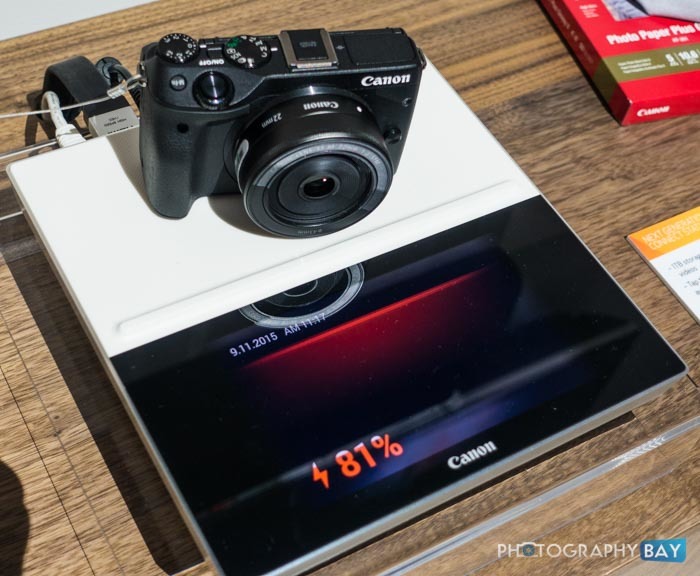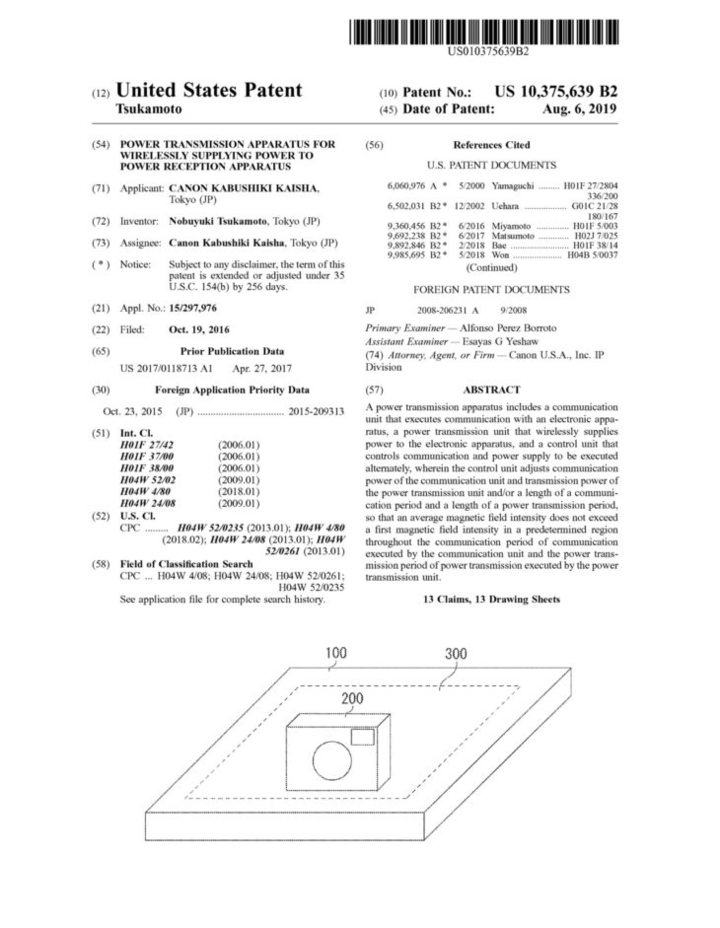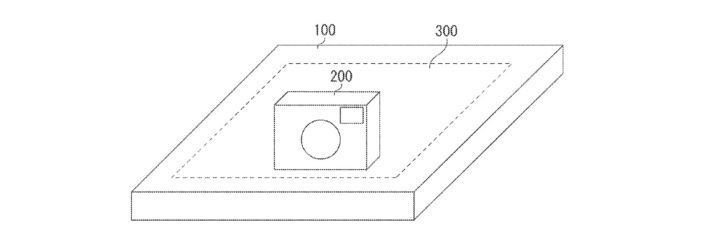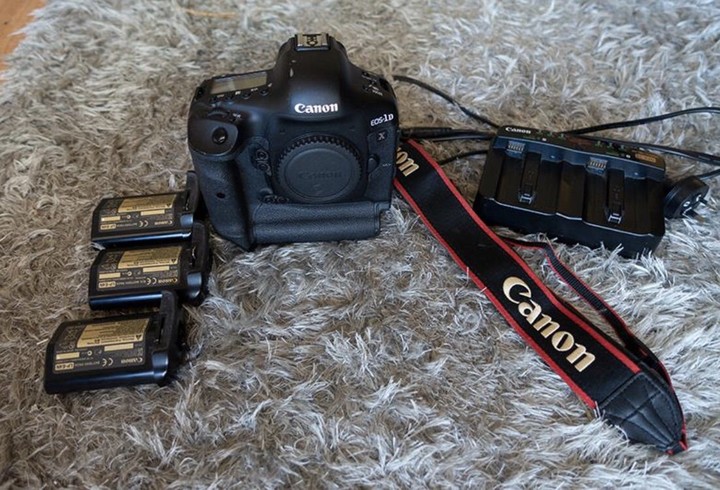As early as 2015 on the Canon EXPO, Canon has exhibited a connected composite wireless device Connect Station.

▲ Canon Connect Connect Wireless Charging System, picture from: PhotographyBay
This Connect Station is an upgraded version of the CS100. It also comes with 1TB of storage space that users can transfer to here for backup via the camera’s Wi-FI function.

In addition, a wireless charging pad is included with Connect Station to wirelessly charge an adapted SLR and no-reverse camera. There is also a screen in front of the charging pad to indicate battery level and charge status.
However, this integrated wireless charging feature was not released at the end. According to the efficiency of wireless charging in the past, it is not meaningful to add wireless charging to the camera. It is normal for Canon to not release this product.
But from Canon’s recently filed patent application, they also have the idea of doing wireless charging of the camera.

According to Camera Information Blog CanonWatch Report, Canon submitted a patent application file numbered US10375639 on August 6. As can be seen from the pictures in the file, Canon applied for a design of a camera wireless charging board.
As shown, a wireless charging board is embedded in a large square. The camera can be wirelessly charged as long as it is placed within the range of the charging pad. There is no specific camera on the patent document. As long as Canon has made a wireless charging adaptation on the body, it can theoretically be used on the charging board.

We can also see it on the conceptual Connect Station exhibited by Canon EXPO. SLR and non-reverse can also be charged on the charging board by adding the corresponding module. After that, if Canon is to adapt it on all machines, it should not be too difficult for all members to use wireless charging.
But for a camera like this, adding wireless charging is far less important than a mobile phone.
Although it’s really convenient to charge the camera when you put it, if you support 20W wireless charging, there is a certaineffectiveness. If you are dealing with small cards such as G7X and G9X, it should be good.

▲ Canon EOS R
But in the face of EOS SLR, EOS R series no reverse, this more professional positioning machine, after charging with wireless charging can not be charging efficiency. Although it is convenient to charge the interaction with one hand, for professional photographers, they are more inclined to change batteries or devices like “fake batteries” to external power supply to ensure long-term shooting demand for battery life.
In addition, more and more non-reverse USB-C interfaces support PD fast charging, and the camera can also supply power through this interface when shooting, achieving the effect of charging while shooting. In this case. The support for wireless charging on the camera body is not significant.

For this, media DIYPhotography is recommended The wireless charging structure is made on the battery. The user’s used battery can be directly charged on the charging board, so that it is convenient to charge, and there is no need to find an adapter for different batteries.
For Canon’s battery types and specifications, wireless charging boards can save time for dedicated chargers. If you have more spare batteries, it is more time-saving to charge directly on a large charging pad.

Just, there are two problems with the wireless charging board for batteries.
First of all, Canon currently has many different specifications of batteries. If you want to do a wireless charging system for batteries in the future, then you need to use EOS SLR, EOS M micro-single and EOS R micro and other small card camera batteries. Unify and adapt.
Unless Canon really focused on the EOS R single system, or with such a battery to do the adaptation, it is also a relatively large project for Canon and their users.
In addition to adaptation, the other is charging efficiency and stability.

Now, mobileThe wireless charging has reached 20W, and the EOS 1DX, a large machine with a vertical battery handle, may be a bit stressful, but it is not a problem to charge a normal camera battery and a small card camera.
Of course, the stability of charging is also important. How to ensure charging while on the go, and how much battery can be supported by a board, this is what Canon needs to consider.
However, Canon is still at the patent stage, and it is still unknown whether it can be commercialized.
Just, it has been more than 4 years since 2015. If Canon also came up with a Connect Station that only supports stand-alone charging, it is really not that interesting.